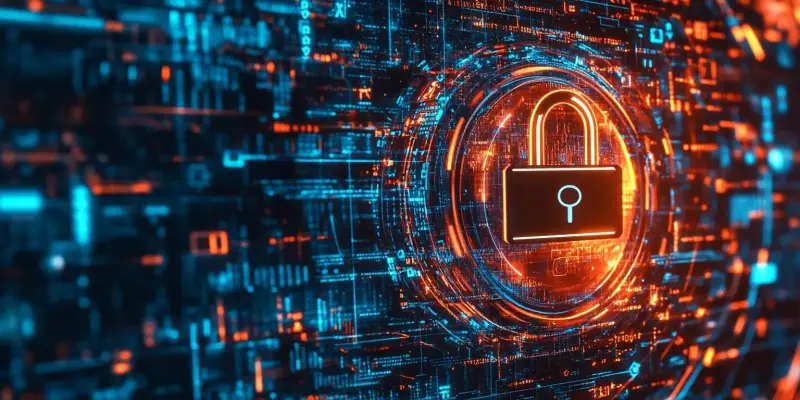The persistent and growing threat of cybercrime endangers essential infrastructure, public safety, and the economic foundation. This necessitates improved collaboration in cybersecurity efforts between the public and private sectors. The extensive vulnerability of various sectors—critical infrastructure, utilities, local municipalities, SMBs, and healthcare—to cybercriminal activities underscores the exponential hazard these threats present. Notable incidents, such as cyberattacks on an energy pipeline and a health insurance provider, epitomize the detrimental impacts of cyberattacks, emphasizing the paramount importance of a robust defense mechanism.
The Disconnect in Data Collection and Sharing
A noticeable disconnect in data collection, sharing, and collaboration between the public and private sectors significantly hampers an effective, comprehensive response to cyber threats. Despite historical attempts by the US government to strengthen national cybersecurity leadership through agencies like the FBI’s Internet Crime Complaint Center (IC3), the National Cyber Investigative Joint Task Force (NCIJTF), and the Cybersecurity and Infrastructure Security Agency (CISA), there remains no singular, authoritative body spearheading the cybersecurity initiative. The absence of a centralized authority allows cybercriminals to exploit gaps in defense strategies, often staying a step ahead of protective measures. This fragmented approach leads to a lack of cohesive action and leaves critical parts of the nation’s infrastructure vulnerable to attack.
The Federal Defense Department’s March 2024 report calls for the establishment of a dedicated military Cyber Force within the Department of the Army. This proposed force aims to unify and enhance cyber defense strategies over the next five to ten years. The report, backed by feedback from over 70 military cyber experts, underscores the urgency and severity of the cybercrime threat to national security. A dedicated Cyber Force would consolidate defense mechanisms, streamline communication, and create a formidable barrier against cybercriminals. By addressing the existing gaps in the current cybersecurity framework, such a force holds the potential to significantly mitigate the risks posed by cyber threats.
Illustrating the Collaboration Gap
The gap in collaboration between the public and private sectors is starkly illustrated by notable cybersecurity incidents. In March 2021, Microsoft Exchange Server vulnerabilities unveiled a significant misalignment in response efforts. The private sector promptly reacted to mitigate the risks, while the government, through agencies like the Justice Department and CISA, lagged in issuing advisories and taking decisive action. Similarly, the response to the ConnectWise ScreenConnect vulnerability witnessed the private sector swiftly addressing the issue, whereas the government’s advisory and subsequent actions were delayed. These examples highlight the consequences of uncoordinated efforts and underscore the need for a more synchronized approach to cybersecurity.
A fragmented response framework not only undermines the overall effectiveness of cybersecurity measures but also erodes public confidence in the ability to safeguard essential services. The importance of harmonizing efforts between the public and private sectors cannot be overstated, as the consequences of misaligned actions can be far-reaching and detrimental to national security.
Key Areas for Improvement
Insights
A unified approach to data collection, analysis, and sharing is essential for equipping policymakers and practitioners with a clearer understanding of cybercrime. By consolidating insights from both the public and private sectors, a comprehensive picture of the threat landscape can be developed. This unified approach can lead to precise counteractions, enhancing the overall effectiveness of cybersecurity strategies. By pooling resources and expertise, both sectors can identify emerging threats early and act decisively to mitigate risks, thereby strengthening the nation’s cybersecurity posture.
Data
Amplified data sharing between public agencies and the private sector can significantly boost readiness and defense against known and emerging vulnerabilities. Real-time sharing of data on threats and vulnerabilities is crucial for staying ahead of cybercriminals. By fostering a culture of transparency and cooperation, both sectors can benefit from early warnings and timely information, enabling swift and effective responses to incidents. A robust data-sharing framework can bridge the gap between isolated efforts and create a cohesive defense mechanism, enhancing the overall resilience of critical infrastructure.
Policy and Legislation
Streamlining classification processes and adopting a common language for cybercrimes can curtail miscommunication and confusion, leading to swifter responses. Clear and consistent policies on cybercrimes can help ensure that both public agencies and private organizations are on the same page when it comes to identifying and addressing cyber threats. This alignment can reduce delays in response times and enhance the effectiveness of defense mechanisms. By establishing a unified legal and regulatory framework, the potential for discrepancies and ambiguities can be minimized, fostering a more coordinated approach to cybersecurity.
Collaboration
Establishing scalable task forces that incorporate government and industry experts for coordinated responses to severe threats is crucial for ensuring a consolidated defense front. These task forces can facilitate better communication and cooperation, leading to more effective and timely responses to cyber incidents. By leveraging the expertise and resources of both sectors, such task forces can address complex cyber threats more efficiently and effectively. This collaborative approach can also enhance the overall resilience of critical infrastructure by ensuring that all stakeholders are aligned in their efforts to protect against cyber threats.
Hacking Back
Exploring and defining the rules of engagement for hacking back against cybercriminals could equip federal and local bodies with the tools and legal framework required to deter hackers effectively. While controversial, this approach could provide a proactive means of defending against cyber threats. By establishing clear guidelines on hacking back, the potential for misuse and escalation can be mitigated.
Leveraging Technology and Partnerships
The ongoing and escalating threat of cybercrime jeopardizes critical infrastructure, public safety, and the economic bedrock of society, demanding enhanced cooperation between the public and private sectors in cybersecurity initiatives. The wide-ranging vulnerability of various domains—such as essential infrastructure, utilities, local governments, small to medium-sized businesses (SMBs), and the healthcare industry—highlights the severe dangers posed by cybercriminal activities. Improving coordination and implementing advanced cybersecurity measures are essential to mitigate these risks and protect vital systems from potential attacks. Such collaboration can ensure that both sectors stay ahead of cybercriminals, safeguarding not only economic stability but also public well-being against these ever-evolving threats.

